*NURSING > STUDY GUIDE > Summary NR 566 Week 7 Study Outline / NR566 Week 7 Study guide, Latest Spring 2021 (All)
Summary NR 566 Week 7 Study Outline / NR566 Week 7 Study guide, Latest Spring 2021
Document Content and Description Below
NR 566 Week 7 Study Guide Chapter 48: Women as Patients Pharmacokinetic gender differences between men and women These three medications have shown differences that are clearly significant betw... een men and women Propranolol (Inderal): early drug that showed a clear gender difference in metabolism (clearance) o PO doses: significantly higher (63%) rate of clearance in men than women o IV doses do not do this: indicates hepatic first pass metabolism o Women: show a significantly greater clinical response to PO doses Verapamil (Isoptin, Calan): PO clears more quickly in men than women based on CYP3A4 o Higher absolute bioavailability in women causes greater pharmacodynamic effects on BP and HR in women Erythromycin: more effective in women o More rapidly cleared in women than men r/t CYP 3A4 Pharmacokinetic Parameter Sex-Based Difference Absorption and bioavailability • Gastric emptying time is slower in females, mainly related to the effects of estrogen. Drugs absorbed in the stomach will have longer exposure to absorption sites. • Gastric levels of alcohol dehydrogenase are lower in females. Plasma concentrations are greater in females than males after ingestion of similar amounts of alcohol. • Gastric acid secretion, pH, osmolality, electrolyte concentrations, and levels of bile acids and proteins do not vary significantly between sexes. Distribution • Females have lower body weights and BMI than males. • Females have a higher proportion of body fat. Lipophilic drugs are more readily absorbed and have relatively greater volumes of distribution than hydrophilic drugs. • Plasma volume is lower in females. Drugs with high volumes of distribution will be more concentrated in the plasma of females. • Organ blood flow is lower in females. • Estrogen is distributed attached to a serum-binding globulin. Exogenous estrogens increase levels of many serum-binding globulins such as corticosteroid-binding globulin and thyroxine-binding globulin resulting in less free drug. Metabolism • Studies have been inconsistent in showing differences in CYP450 substrates; the general trend is toward high rates of metabolism for CYP450 3A4 substrates and lower rates for 1A2 and 2D6 substrates. • Females have lower levels of p-glycoprotein and higher rates of drug clearance for drugs that are substrates of p-glycoprotein. Excretion • Gender differences in rates of renal excretion of most drugs are probably more related to simple weight differences. Renal clearance of drugs that are not actively secreted or reabsorbed is dependent on the glomerular filtration rate, which is directly proportional to weight and consequently higher (on average) in men. Pharmacokinetic Parameter Sex-Based Difference • Drugs that are actively secreted by the kidney may show gender differences, but further study is required to demonstrate this difference. Recommended Calcium and Vitamin D Intake for Adolescents and Adults Adolescents o 1,300 mg of calcium daily is recommended for females aged 9 through 18 years, drinking three cups of low-fat or skim milk & consuming 8 ounces of low-fat yogurt. If unable to meet the recommended daily amount of calcium through diet alone, calcium carbonate (Tums, Caltrate, or Viactiv) with food to maximize absorption. o vitamin D is required for optimal calcium absorption a daily multivitamin that includes at least 400 IU vitamin D should also be taken Adults o 19-50 years old: 1,000 mg/day o 51-70 y/o: 1,000 mg/day o 71+: 1,200 mg/day Non-Pharmaceutical Treatment of Symptoms Associated with Menopause Many options for managing menopausal symptoms are available exercise, relaxation techniques, massage therapy, acupuncture, herbs, or pharmaceuticals (such as HRT) Some women unable or choose not to take HRT and have turned to phytoestrogenssubstances with estrogen-like properties found in o certain herbs: ginseng, black cohosh, dong quai, fenugreek, and licorice o certain foods—especially carrots, yams, and soy products—varying efficacy Nutritional supplements for a diet rich in calcium and vitamins E, D, and B complex. Menopausal women should avoid foods such as caffeine, alcohol, and spicy foods that can trigger vasomotor symptoms Table 48-3: Alternative Therapies for Menopause Symptoms o Hot flashes: pharmaceuticals [Show More]
Last updated: 1 year ago
Preview 1 out of 18 pages

Buy this document to get the full access instantly
Instant Download Access after purchase
Add to cartInstant download
We Accept:

Reviews( 0 )
$12.00
Document information
Connected school, study & course
About the document
Uploaded On
Jan 27, 2022
Number of pages
18
Written in
Additional information
This document has been written for:
Uploaded
Jan 27, 2022
Downloads
0
Views
66



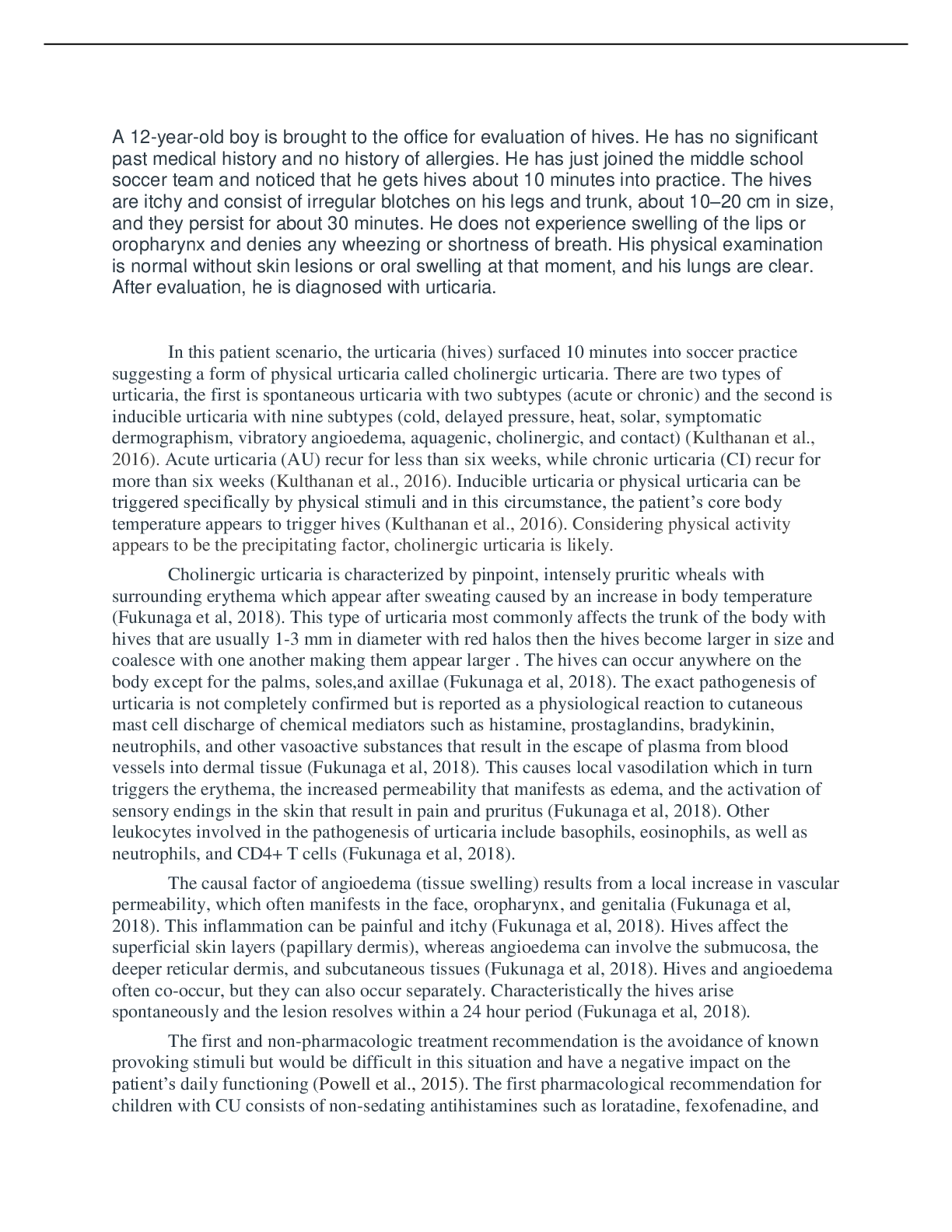
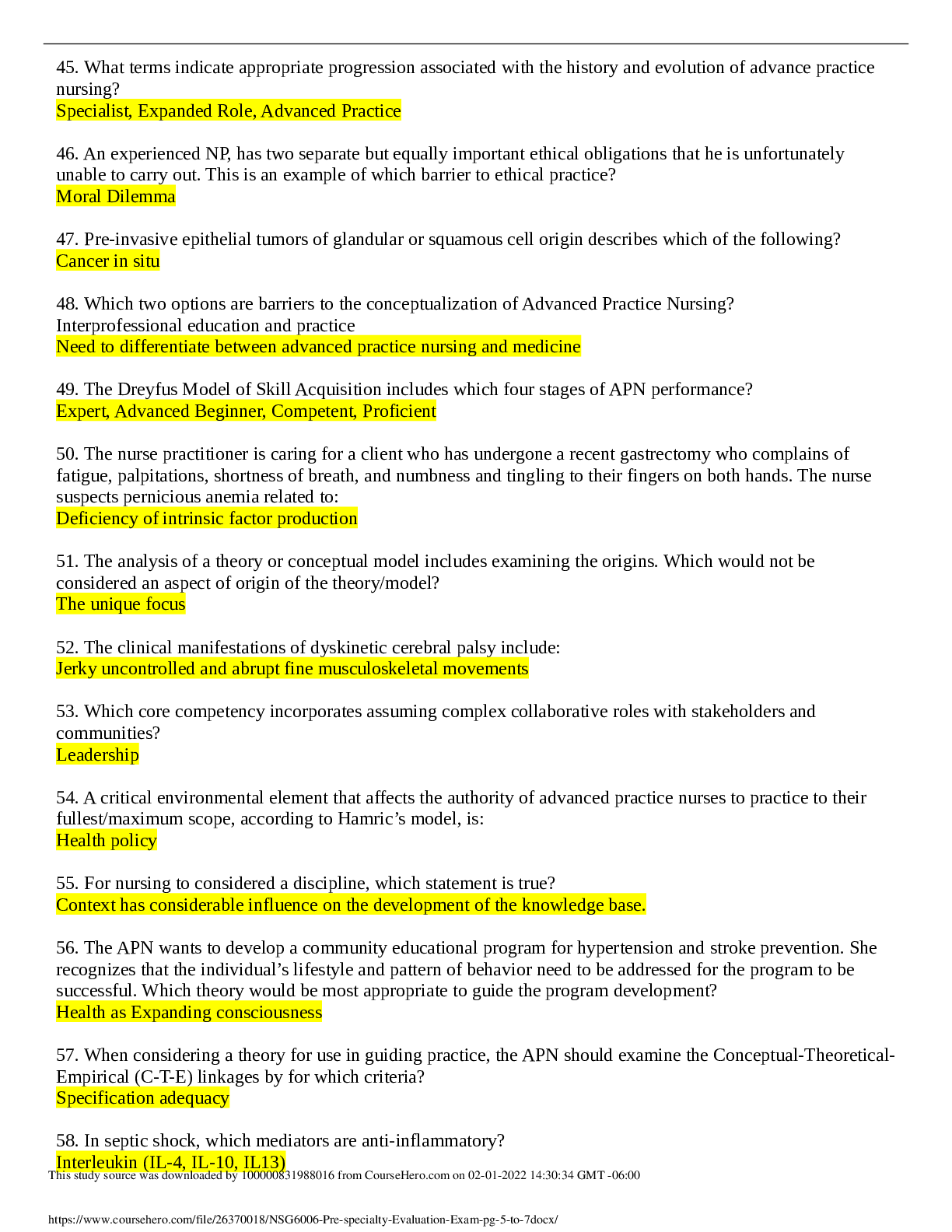





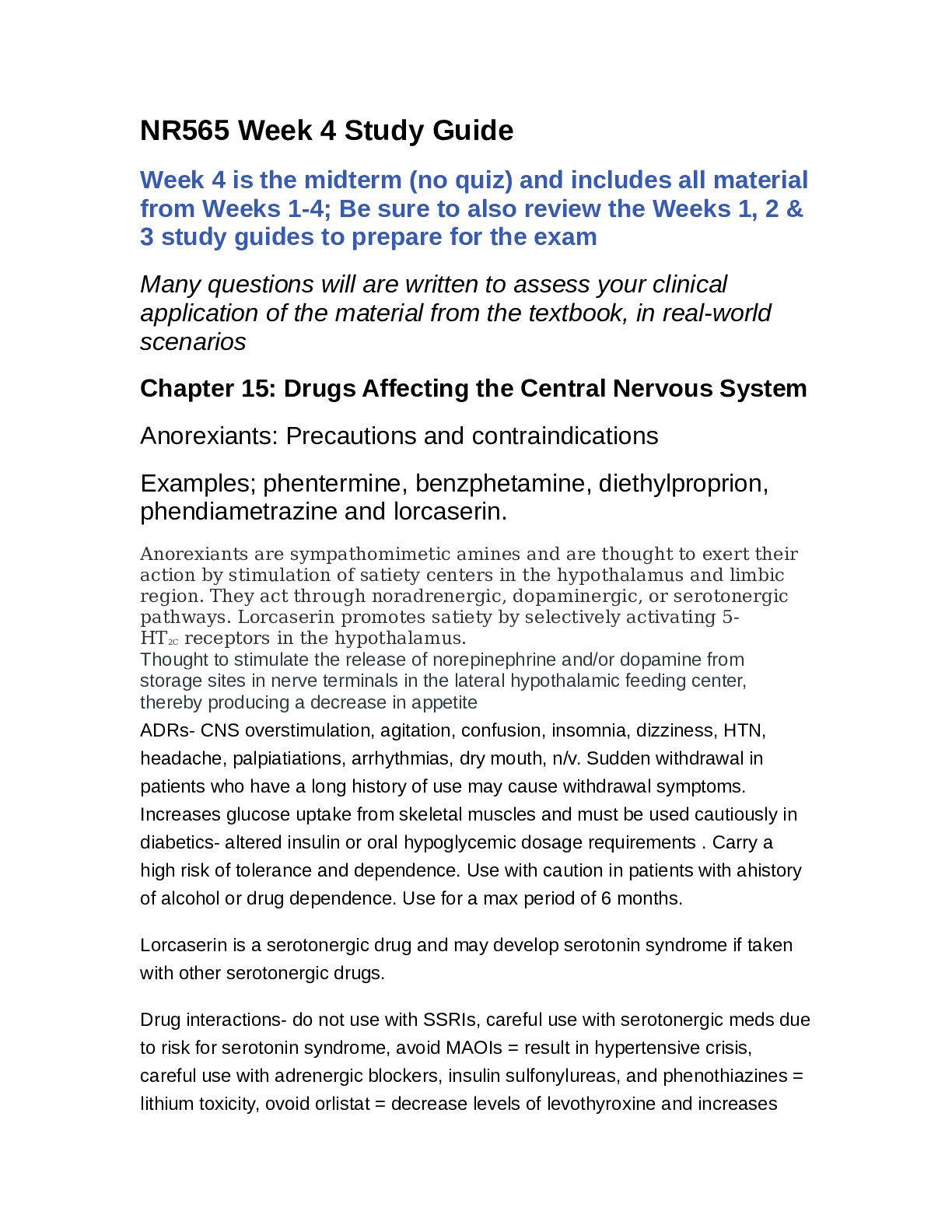


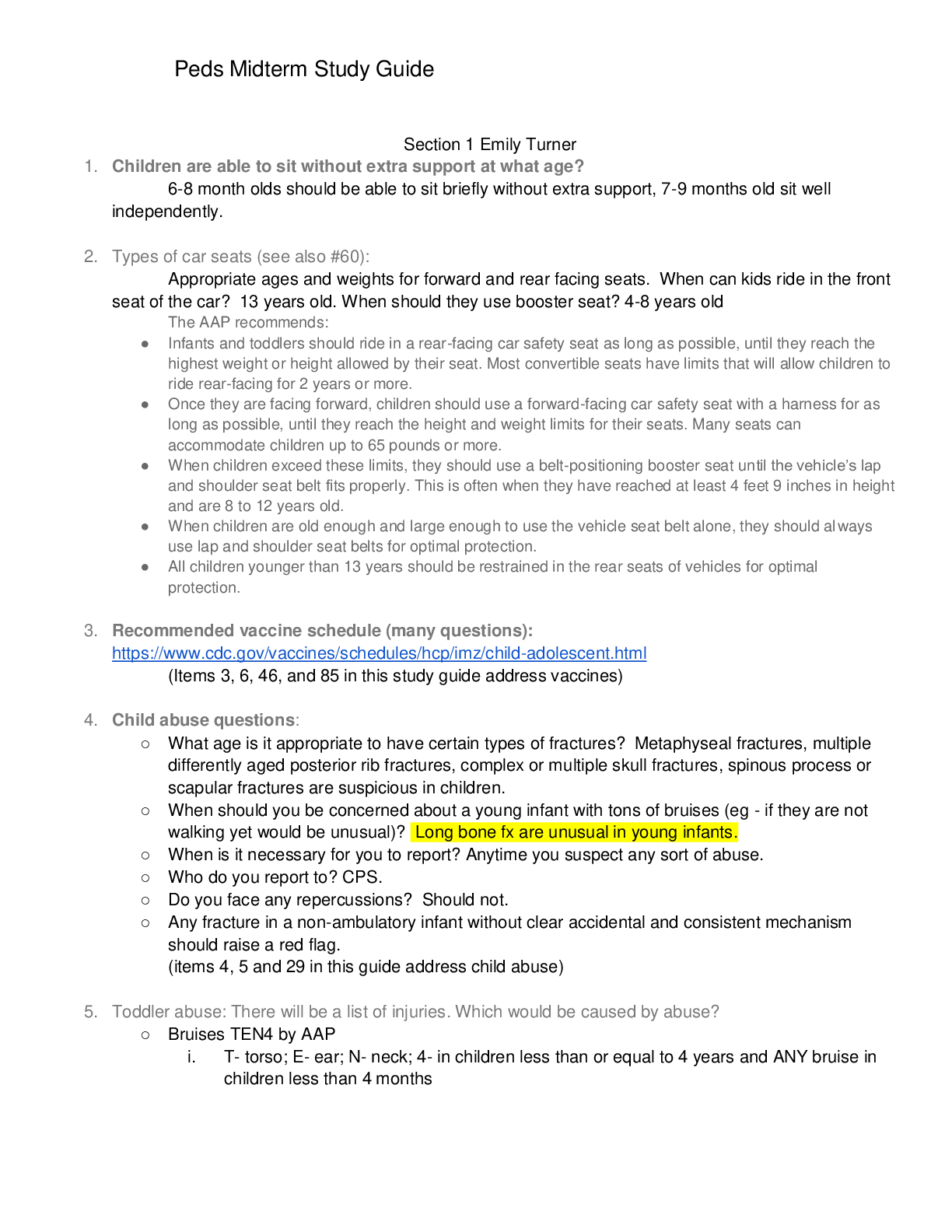

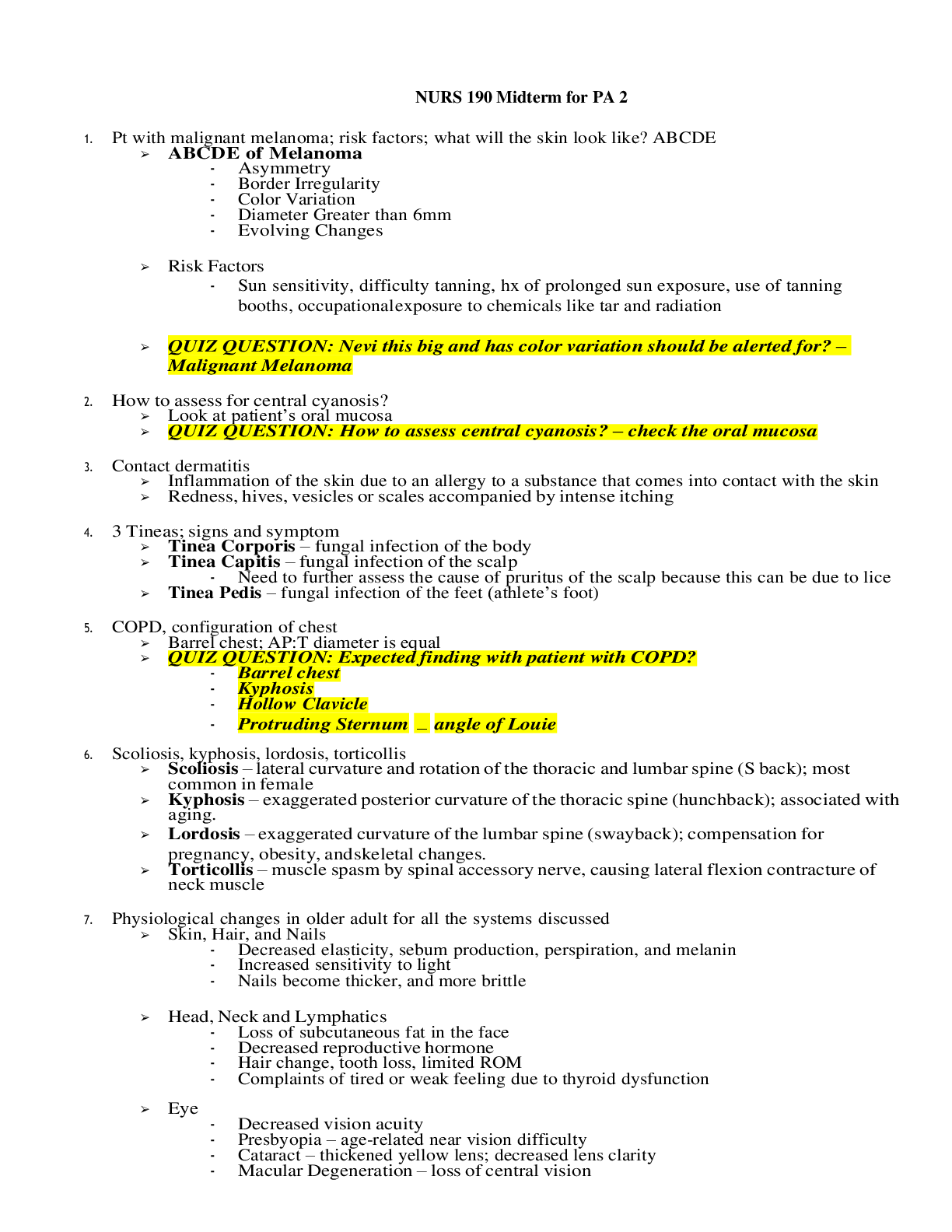
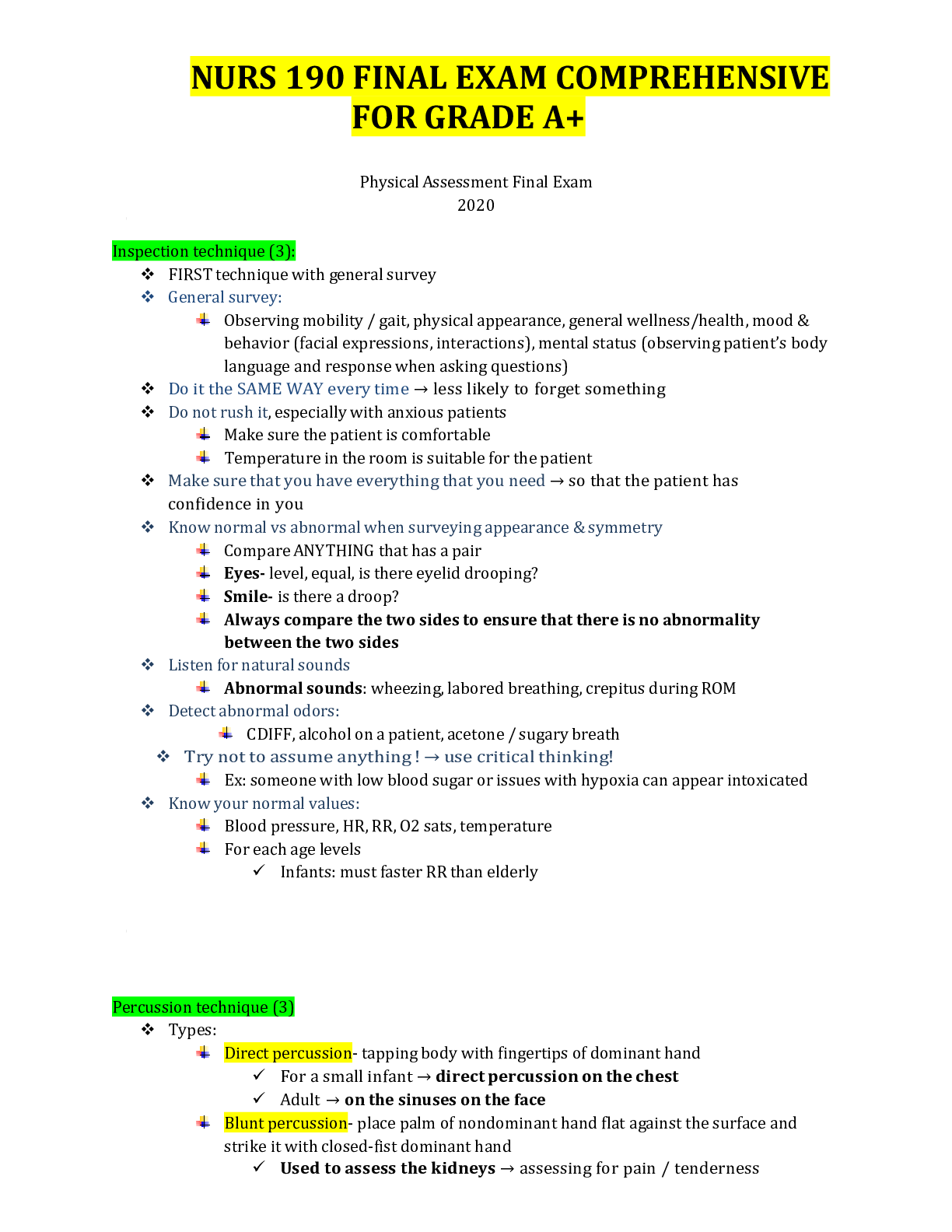
.png)


.png)
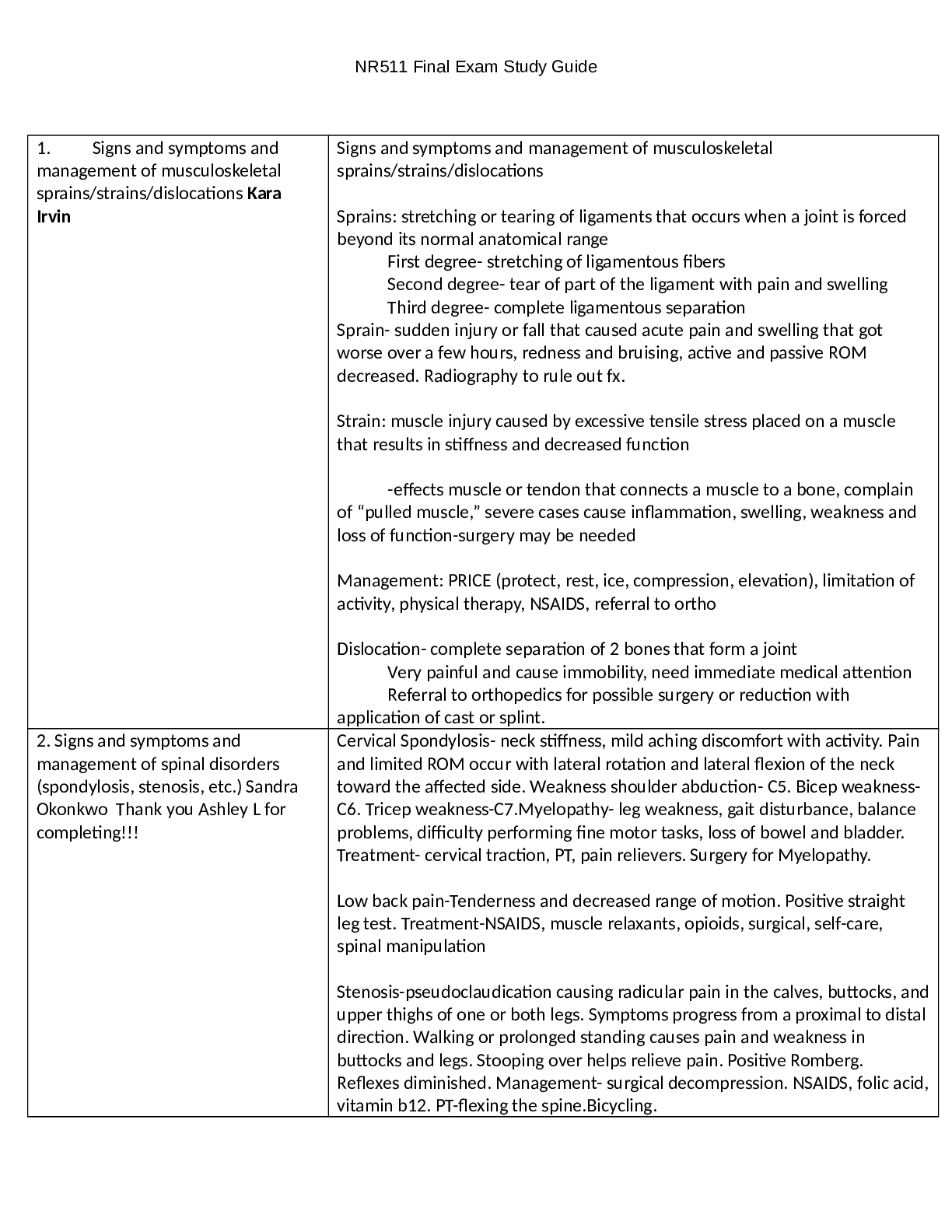
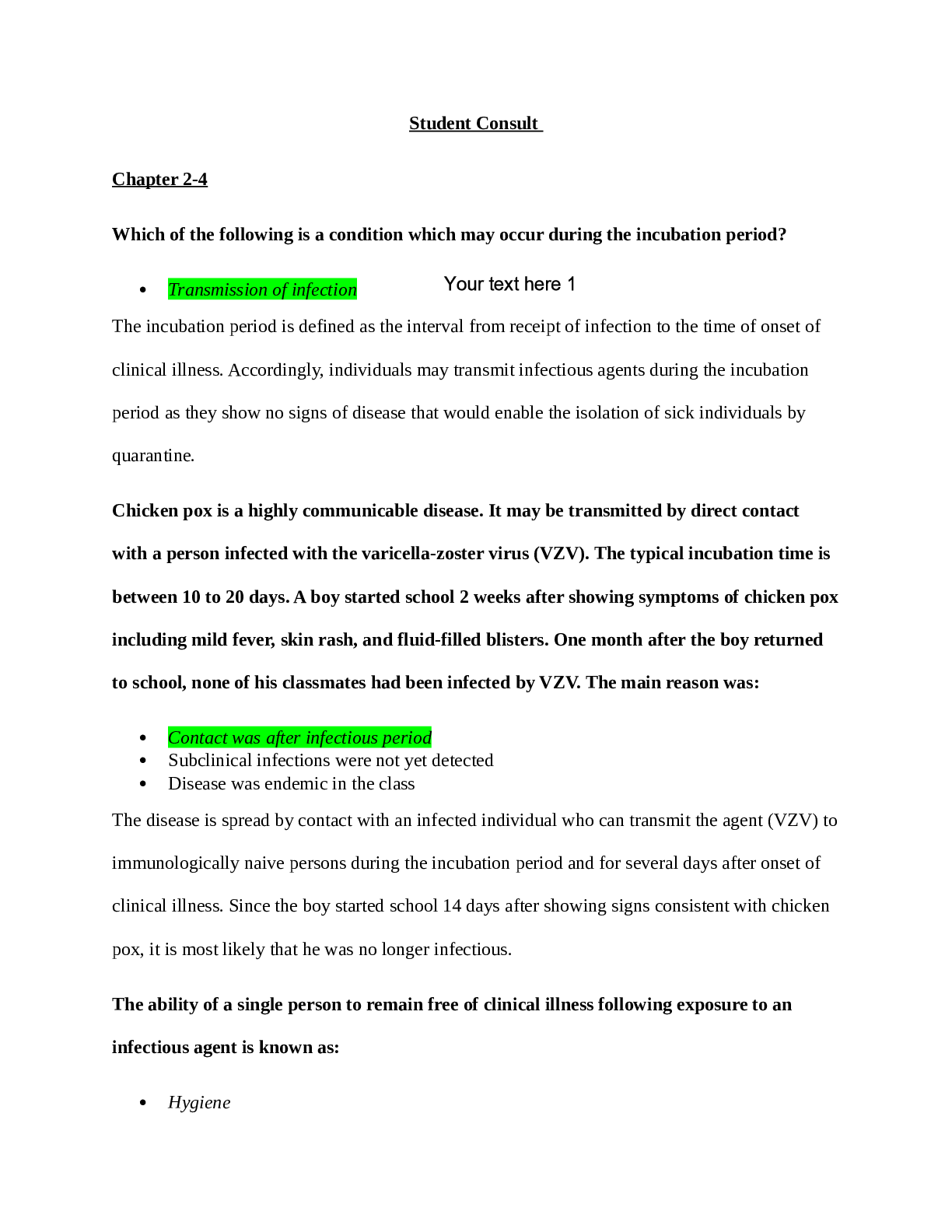
.png)

